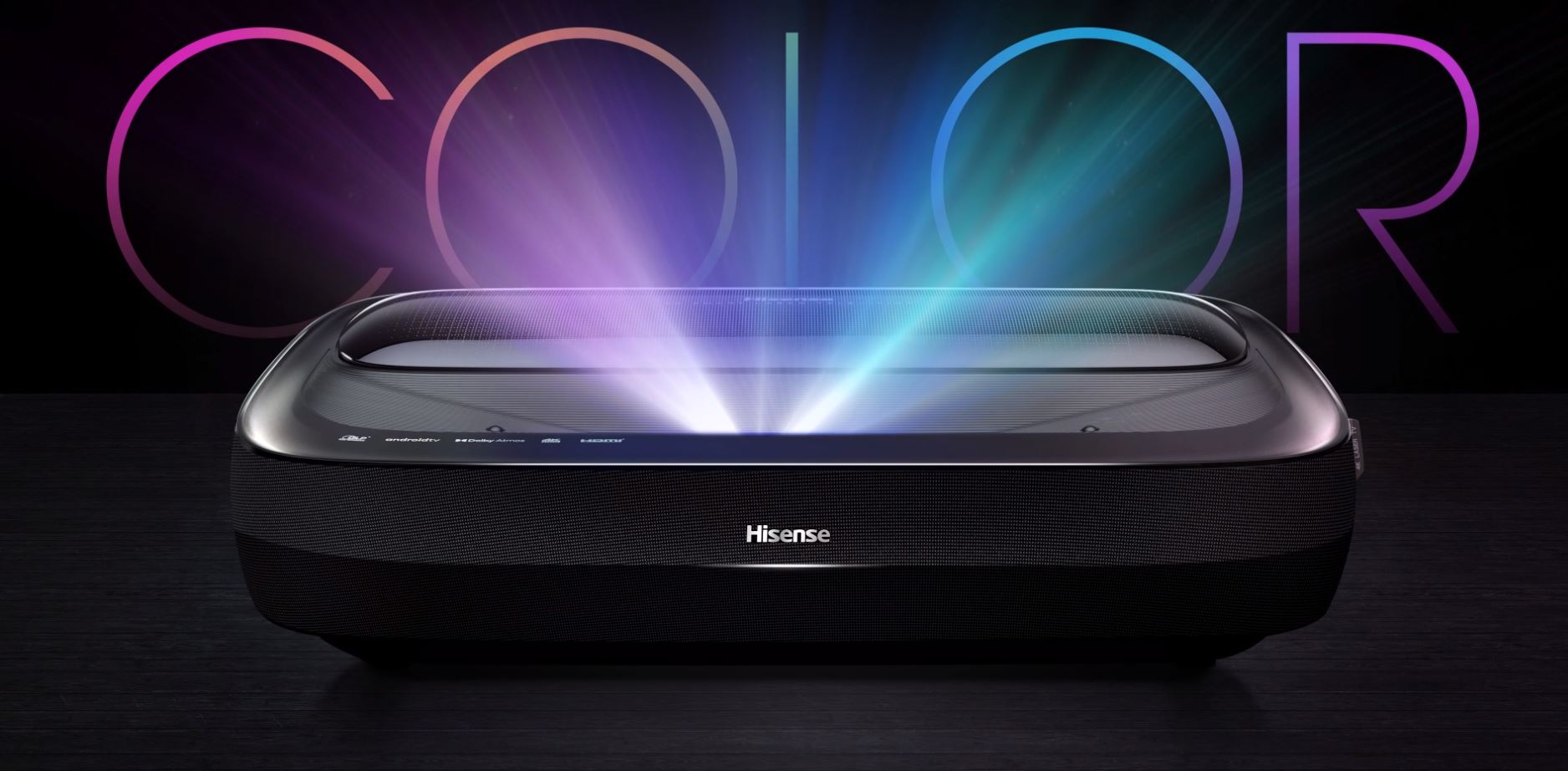Epson Home Cinema 5020 vs. Panasonic PT-AE8000
Here is a link to the separate comparison including side-by-side images for the duel between the Panasonic PT-AE8000 and the Epson Home Cinema 5020 UB. Here's a short version:
Two inherently similar projectors - they share the same LCD panels, similar in size, similar in zoom lens, and lens shift as far as placement flexibility goes. Both are ultra high contrast projectors, but on the opposite ends of the that spectrum. Warranties and support are very different. Brightness this year is very similar, a major change from last year when the Epson was clearly the brighter by a very significant margin.
Pricing is also rather different. Panasonic likes to launch with a promotion, and this year that promotion is two free pair of 3D glasses (the lightest active glasses I've ever worn). That ends on 12/31/12. Of course there's always the possibility they will extend, but, you have about a $200 incentive to buy a Panny before 1/1/13 should the promo simply expire.
As long as the Panasonic has the offer, the Panasonic is inherently $400 more than the Epson: $2999 with 2 pair of 3D, vs. $2599 with 2 pair of 3D glasses. Should the promotion just end, then the price difference increases to $600. Until that happens the Panasonic is 15% more expensive, but post expiration, that will turn into the Panasonic costing 23% more. Any way you slice it the Epson is the lower cost proposition.
More cost related info: Both claim the same lamp life, but Panasonic charges $379 compared to $299.
Warranty: The hidden cost. We know most folks don't give warranty differences much thought, even though we do. (We know that the warranty page is always the one least read, in every home projector review.) In this case, the Warranty differences have the potential to affect long term cost and convenience.
Both have two years, but Panasonic limits their two year warranty to 2000 hours. That means anyone who remotely sees theirself as a heavy user (let's say more than 20 hours a week), such as those who use their projectors as a primary "TV", is going to run out of warranty before the two years are up. A very heavy user like (when I'm not reviewing) - my usage is similar to the national average for TV viewing - upward of 40 hours a week. That means that for folks with usage like mine (and there are a lot of us), the warranty won't even make it one full year.
Further, Epson will immediately replace any projector that is suffering from a warranty problem, by shipping right out (within 1 business day) a replacement which you keep), they pay the freight, including to get your busted one back. Basically a great waranty and minimal hassle.
Warranty is a clear and important advantage for Epson. It means nothing if you never have a problem, but we all can't be that lucky!
The Epson simply looks visibly better on dark scenes, thanks primarily to the black level advantage, which will give you the feel of a lot more pop to the image. While that may not mean much on a typical bright scene, as we all know, other than sporting events, there are usually plenty of dark scenes in most other content, especially movies, and plenty of HDTV. (How many vampire shows are out there?)
Lens Memory and Split Screen: Lens memory let's you use a 2.35:1 screen instead of the usual 16:9. That's great for folks who primarily watch movies. As I've learned, I like the wide screen, but hate that my sports are so much smaller, with my wide screen.
If you don't care about that, want to not have to see letter boxing on those widescreen movies, and therefore plan to get a 2.35:1 screen, then the Panasonic is your clear choice. The Epson with it's manual zoom lens simply can't have a way to use a widescreen short of an anamorphic lens and outboard processor (buy the Pro Cinema 6020 in that case, it supports anamorphic lenses so no outboard needed).
Thus for those wanting 2.35:1, the Panasonic is the practical and affordable choice.
Split screen. Two side by side images is a really fun idea. As I've said, works for me. Footbball game on one side, my MacBook feeding the other window to show my fantasy football info.
If you can't live without Split Screen, then the Epson is for you.
Other than those two special features, you have a real choice.
Brightness: Once a big Epson advantage, it's now a small one - in 2D. At their brightest, these two are close enough to be considered equal. In calibrated best mode, however, the Epson is still over 12% brighter (602 vs. 678 calibrated lumens). Not a huge amount, but enough to be factored into a decision. Think this way - the extra lumens enough to have the same brightness with the Epson Home Cinema 5020 UB on a screen that's 5 or 6 inches larger than the screen for the Panasonic PT-AE8000.
3D: Last year I considered the Panasonic to be the clear winner in terms of 3D. True, it wasn't as bright, but that Epson would not allow their dynamic features to work in 3D - the dynamic iris, CFI, -resolution... put it at a distinct disadvantage for 3D. This year, the most important by far, of those dynamic features - the Dynamic Iris is available in 3D The Epson for example goes from seriously inferior blacks last year (in 3D) to superior blacks this year in 3D...
The Panasonic's 3D may actually be a touch more precise than the Epson's due to some extra parallex correction, but what they are doing is hard to spot. The real difference is 3D brightness. While the PT-AE8000 pretty much closed the gap on 2D brightness, it's no contest, the Epson is very visibly brighter in 3D. Whether its the glasses, the processing... no matter, they are not close in brightness when viewing 3D comparing both in their brightest modes, which is where you probably want to be unless you have a really smaller screen.
There's more, but then that's why I do a 4 page comparison. This is the short version. Let's forget about price for moment.
Bottom line: I give the Epson the overall advantage picture wise, the blacks are the key reason for that. They also have real wins in 3D (due to brightness), warranty and support. Plus there's the cool split screen feature.
The Panasonic is the winner if you want an anamorphic shaped screen, thanks to lens memory. It's also got cool features - the Waveform monitor and side by side image analysis. Regarding that, ultimately, it's estimated that less than 10% of people use wide screens, and most of those are owners of some very expensive projectors, equipped with anamorphic lenses and sleds, and they are probably viewing in some very classy home theaters where the owners have spent far more for seating than both of these projectors cost combined. (I'm talking about projectors from Runco, SIM2, and throw in Sony's $24,999 VW1000ES.)
Other than lens memory, placement flexibility is essentially a tie.
From a personal note, I would pick the Epson for my personal use, but once again, I can fully understand why many choose the Panasonic.
Like Brightness, Size matters. In this case, I'm talking the size of the price tag. Even at the same price, everyone's going to line up with a favorite of the two, but keep that wallet in mind. The Epson is currently $400 less, and that can jump to $600 if the Panny glasses promo goes away.
In years past - really until last year, it was usually the Epson that cost a few hundred more. With the Epson being a serious chunk of change less expensive, and still a bit brighter calibrated, and in 3D, it would seem that if you can live without lens memory that the Home Cinema 5020 is the better value proposition of the two.
Enough!
Click to read the comparison.






